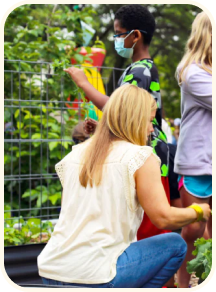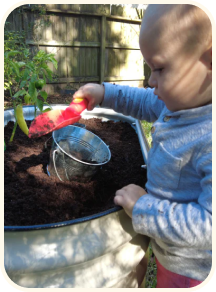Time Saving Tips for Vegetable Gardeners
In today’s hectic world, it can be difficult to find time to pursue your hobbies. Many gardeners find it tiring to have to repeatedly weed and water their garden, especially after a long, exhausting day at work. Traditional gardening, which conjures up images of back-breaking work and heavy toiling using spades, does not appeal to everyone, especially the lazy. If not planned properly, a garden can easily become overwhelming, instead of serving as a spot for rest and solitude.
Fortunately, there are ways to simplify your garden schedule to help you save time and effort. At Vego Garden, we strive to make gardening accessible to everyone through our innovative, extensive product offerings, ranging from versatile garden bed kits to worm composters. Below are several time saving tips that vegetable gardeners of all skill levels can benefit from.
- Garden in Raised Garden Beds
Raised garden beds offer many benefits, including providing optimal drainage, extending the growing season, and allowing you to grow plants in areas with subpar soil composition. With Vego raised garden beds, which come in 17" and 32" tall configurations, you do not have to strain your back when tending to your garden. By purchasing raised garden beds from a reputable vendor, you can save time by forgoing labor intensive steps involved in clearing the ground for a garden.
Strenuous tasks such as weeding, digging, and tilling become unnecessary, or are reduced to a minimal level. The elevated structure of the metal garden beds, which allow you to control the soil composition and quality, also deters weeds and eliminates the need for digging and other traditional methods of cultivating the soil.
- Use a Drip Irrigation System

Overwatering and underwatering are major problems gardeners face. If you have multiple raised garden beds or live in a climate with dry summers, you can consider installing an automatic watering system such as a drip irrigation system. A drip irrigation system operates by delivering the correct amount of water to the root level and can be automated on a timer so you do not have to wake up early and water your plants. Tubes with emitters are placed on the ground alongside the plants, which slowly drip water to the root zone.
Usually found in commercial nurseries and farms, home gardeners have begun installing drip irrigation systems due to their advantages. Compared to other irrigation techniques, it uses less water and reduces evaporation and run-off. Some benefits include reduced water use, healthier foliage, and prevention of fungal diseases. Sprinklers are only 65 – 70% efficient, while drip irrigation is 90% efficient. For a more economical and simpler approach, consider using soaker hoses.
- Compost in Place
Many find traditional composting systems tedious, as they have to be constantly maintained so they do not leak or emit unpleasant odors. They may also attract pests and be too dry or too wet. With Vego Garden’s In-Ground Worm Composter, you can start composting right inside your raised garden beds efficiently with minimal maintenance. By purchasing our worm composter bins, you are saving both money and time.
Designed to be installed inside existing Vego Garden beds, our product eliminates the step of composting food scraps in a bin, and instead allows you to directly place them in your beds. This in-ground worm bin utilizes the digestive power of worms to break down organic waste into nutrient-rich compost for your plants. Unlike above ground systems, it is odorless and hassle-free. The holes in the composter allow worms to move freely in and out of the bin to spread worm castings, which will enrich the soil.
- Choose Easy to Grow Plants

As the weather warms up, many gardeners are deciding what plants to grow in their garden. When choosing which plants to grow, you should consider choosing vegetables that are low maintenance if you are a beginner. Cauliflower, a common supermarket crop, can be difficult to grow, requiring a long growing season and susceptible to pests such as cabbage worms and disease. Carrots require careful soil preparation, preferring loosened and well-tilled soil free of pebbles or rocks.
Easy to grow vegetables include cherry tomatoes, lettuce, peas, and potatoes. Herbs are also easy to grow and add flavor to dishes. They can be cultivated in our Herb Garden Beds or Kids Garden Beds. Many herbs have attractive blooms and serve useful functions such as attracting pollinators and deterring pests. Perennial varieties will come back each year, ensuring a continuous fresh harvest.
- Use Mulch
Many gardeners forgo mulch after planting. However, mulch is recommended as it helps converse moisture and suppress weed growth. Apply a layer of mulch after planting from mid to late spring. Organic mulch is ideal for a vegetable garden because it breaks down over time, adding nutrients back into the soil.
- Leave Plant Roots in the Ground
When you are preparing your garden bed for winter, you may be wondering what to do with withered and dead plants. Some decide to yank them out and put them into the trash can or compost pile. However, it is better if you leave them in the ground. Soil microbes will decompose the plant roots, converting them into nutrients into the soil and enhancing the soil structure. A process intended to mimic the natural system of a forest, it saves you time while also enriching the soil.
- Plant Perennials

To save time, try planting perennial crops. If you don’t want to worry about the crops being damaged by annuals, you can opt to grow them in a specific perennial bed. Although there aren’t many perennial vegetables, there are a few you can try, including globe artichokes, garlic, lemon balm, sorrel, and certain types of onions. In addition, you can plant perennial flowers amidst vegetables to help brighten up your garden bed. Berries like strawberries, raspberries, and blackberries can also be grown, especially in containers.
- Start Small
When beginning to garden, limit yourself to a few plants, as growing many different vegetables in a large amount of space can be overwhelming. When you become more experienced, you can expand the size of your garden and experiment with a wider variety of crops. Raised garden beds are especially useful for beginners because they are scalable and you can always add more. Begin with a few small raised beds or choose a large one.
- Get Kids or Friends Involved
Gardening is a great way to instill in kids many important values, such as perseverance, patience, and the beauty of the natural world. Considering asking kids to help out or purchasing their own garden beds so they learn how to tend to a garden. You can also invite friends over to help with the gardening, which can add fun and excitement to boring tasks. In addition to saving time, gardening alongside friends helps establish a shared sense of community and allows people to better connect with each other.
- Use Good Quality Soil

Healthy soil is important for a flourishing vegetable garden. Many gardeners will use regular garden soil for raised beds, which is a mistake. Garden soil is too dense to be used in containers or raised beds, and the moisture content is inadequate to support vegetables. The ideal soil type is sandy loam, which is essentially soil that is loose, well-draining, and rich in organic matter. To fill raised garden beds economically and save time, we suggest trying the Hugelkultur method.





























Leave a comment